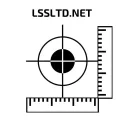This guide is suitable for setting up a Theodolite. This method is the best practice for all Theodolites, as it prevents the Theodolite from being subjected to shocks or undue forces during the adjustment process.
Disclaimer: This site, and in particular this page, contains affiliate links to products. You are under no obligation to but if you visit and buy something from their site from a link on this site, we will receive a small commission, the price you pay will remain the same. This helps to keep this website running and your help is appreciated.
Remember that before setting up any Theodolite on a tripod it is important to know that the tripod you are using is in good condition. A test for the tripod can be found on the page test your tripod.
Setting up a Theodolite with either an optical plummet or laser plummet can be quickly achieved in a few easy steps.
- Locate your desired reference point that you wish to set up above. This is most often a survey marker or a hilti nail or a PK nail. It is important that this point has a defined centre.
- Extend the legs of the tripod until there is about 150mm of travel left and lock the legs off. These need only be tightened just enough to support the survey equipment during the adjustment phase.
- Set the tripod roughly above your reference point and tread the legs into the ground securely. The top of the tripod should be roughly chest level. This is the best height to then comfortably operate the survey equipment.
- Place the Theodolite on the tripod and secure with the locating screw. This again only needs to be tight enough at this stage to prevent undue movement of the Theodolite.
- Look through the plummet or at the laser dot and using the foot screws on the tribrach adjust until the cross hairs or laser dot are over your reference point. At this point the Theodolite will not be plumb.
- Look at the circular vial on the tribrach and adjust the legs of the tripod until the bubble is once again in the centre. You should only need to adjust two of the three legs to get the Theodolite plumb. When adjusting the legs of the tripod it is prudent to wrap your thumb around the upper part of the leg, just above the lower section. Thus, your thumb acts a block to the lower section of the tripod leg and prevents the Theodolite falling over.
- Look through the plummet or at the laser dot and this should still be over your reference point. If not, then loosen the centre screw and move the tribrach and check the circular vial again. Adjust using the foot screws to get the bubble in the centre, if required.
Once the Theodolite is set up as above a final check can be performed. This will check for errors in the optical plummet or the laser plummet or the setup of the Theodolite. This is done by observing the known point via either the optical or laser plummet whilst turning the Theodolite through 360degrees, ideally at 90degree intervals. Any significant deviation from the centre of the known point would require the Theodolite to be checked and calibrated by an approved service provider. For general construction purposes, significant deviation would be considered to be more than 1mm for a 1.5m tripod height.
Once you have setup your Theodolite above your known point it is prudent to check the accuracy. To do this you should follow this guide on how to check a theodolite.
- 2 second accuracy and vertical axis compensation, user selectable display resolution of 1-second or 5-seconds.
- Dual, backlit displays and controls, very large LCD characters are easy to see
- Large suite of parameter settings, includes programmable settings for horizontal angles resolution and beep, vertical degrees or percentage automatic shutoff to save battery life, zenith angle and the vertical axis compensation on or off
- Built in reticule illuminator and IP-54 rating low light, water and dust resistant. Quick setups with low operator learning curve
- Rechargeable kit and backup alkaline pack included, long battery life of 36 hours, backup pack runs on four standard AA batteries
Related Articles



